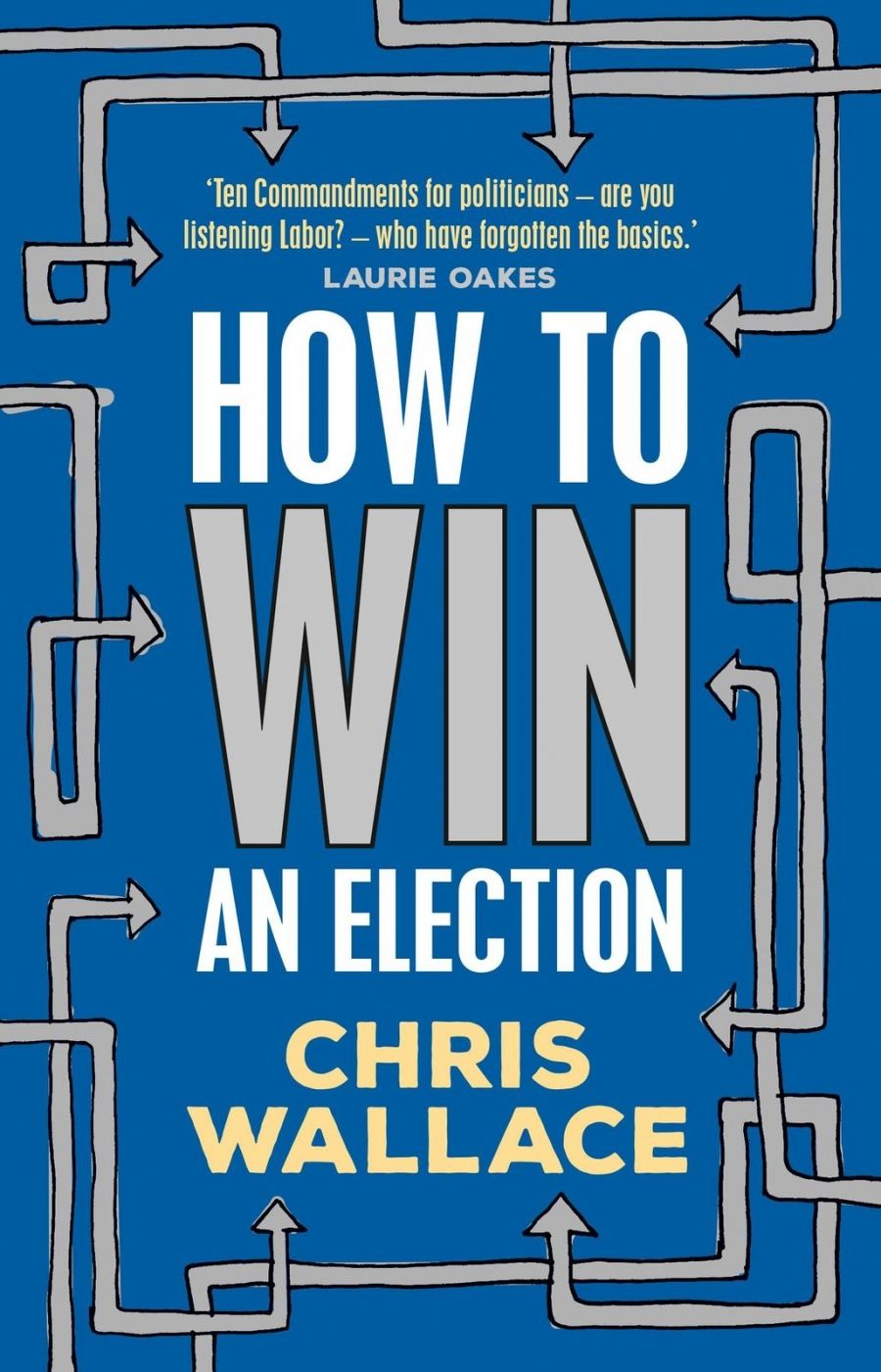
- Free Article: No
- Contents Category: Politics
- Review Article: Yes
- Article Title: No consolation in loss
- Article Subtitle: How Labor might win the next election
- Custom Highlight Text:
Thucydides once said, ‘In a democracy, someone who fails to get elected to office can always console himself with the thought that there was something not quite fair about it.’ Chris Wallace is not inclined to agree with the Greek historian, particularly when dissecting the Labor Party’s shock federal election loss in 2019. In her latest book, How to Win an Election, Wallace nominates the ten things that Labor must get right to succeed at the next federal election, and self-pity is nowhere among them. This approach appears simplistic, even tongue-in-cheek at times, but she has captured the key elements of electoral success and makes a strong case that Australia cannot afford another ALP loss.
- Grid Image (300px * 250px):

- Book 1 Title: How to Win an Election
- Book 1 Biblio: NewSouth, $29.99 pb, 160 pp
- Book 1 Readings Link: booktopia.kh4ffx.net/Arjzx
From the outset, Wallace makes it clear that she is a Labor supporter, so if you are an LNP stalwart seeking schadenfreude, you should look elsewhere. Not a book for the conservative-hearted, How to Win an Election is part rousing call to arms for Labor aficionados and part invocation to Labor not to lose the next election. Using a cute ten-step structure akin to a self-help book, Wallace brings a political historian’s incisive approach coupled with a strong understanding of the context of Labor electoral fortunes since Federation.
This is not to say the book is merely a shallow rendering of the key factors in a successful federal election campaign. Wallace, clearly aware how dry and boring the average dissection of an election can be, seeks to use a more narrative and creative form to impart information. While this is at times straightforward (‘Create policy winners, not losers’), it is often brilliantly insightful and draws out issues that played out less publicly in Labor’s unexpected defeat. The discussion of polling and the importance of primary votes is instructive. Wallace argues that, federally, Labor needs a minimum of thirty-eight per cent of the primary vote to have a chance of forming government. Wallace’s attention to detail is impressive; there is a table breaking down the percentage of the primary vote won by the ALP and LNP in every election since Federation.
The most incisive chapter is called ‘Negotiate with Opponents on the Same Side of Politics’ and is a must-read for diehard Laborites. The ALP’s broadly professed (and in some individuals profoundly held) hatred of the Greens (and vice versa) is called out for what it is: inherently destructive. When Labor and the Greens work more collaboratively, the result is likely to be positive and to advance public policy and good government. Wallace cautions: ‘Parties and those who lead them can lose sight of the desired needs they share and focus instead on the leader and the party needs and greeds.’ This could not be truer of the Labor–Greens antipathy stemming from the Greens’ decision not to support Rudd’s Carbon Pollution Reduction Scheme in 2009, an act that will no doubt stoke mutual blame and mistrust from both parties for many years to come.
It is clear that Wallace intended her book to speak to readers across the political spectrum, but it is equally clear that she had her Labor comrades in mind as she wrote. The chapter entitled ‘Do Brilliant Cut-through Ads’ is a candid assessment of the lacklustre ALP advertising campaign in the 2019 election. Not only did Labor’s spending on advertising barely compete with the LNP’s in both the 2016 and 2019 elections, but the ads were ‘too dull to remember’. She’s not wrong – can anyone recall a single ALP ad from those campaigns?
However, to focus on the minutiae of this book would be to do it a disservice. Wallace’s purpose, despite the book’s title, is not to provide a blueprint to being elected, but to set out the compelling case that every election the ALP loses results in three more years of conservative rule that the country can’t afford.
Wallace describes writing the book during the ‘Great Conflagration’ over the summer of 2019–20 when it seemed as though half the country was on fire; and then during the early stages of the Covid-19 pandemic when it became clear the Australian economy was going to endure a second catastrophic event in six months, taking many businesses and jobs with it. Wallace describes the importance of election outcomes in this way:
In this context Labor’s unnecessary 2019 election loss assumes its proper proportions. The fact Australia has to wait until at least the next election for a competent, far-sighted government to enact decent climate policies and address the deep social and economic inequities highlighted so starkly in the pandemic, matters absolutely.
Perhaps it’s because we all feel on the brink and yearn for wise, qualified leaders that this book feels so pressing. The electoral process and the success of plainly unqualified candidates on both sides of politics remains a mystery to many voters. Wallace offers clues as to why they flourish; they warrant deeper reflection.
Some facets of the book don’t work, including the little narrative that opens each chapter, in which Wallace personalises the lesson for Bill Shorten. Otherwise, How to Win an Election is a page-turner. Full of interesting titbits and digestibly short, this is a nourishing read for the politically inclined.


Comments powered by CComment